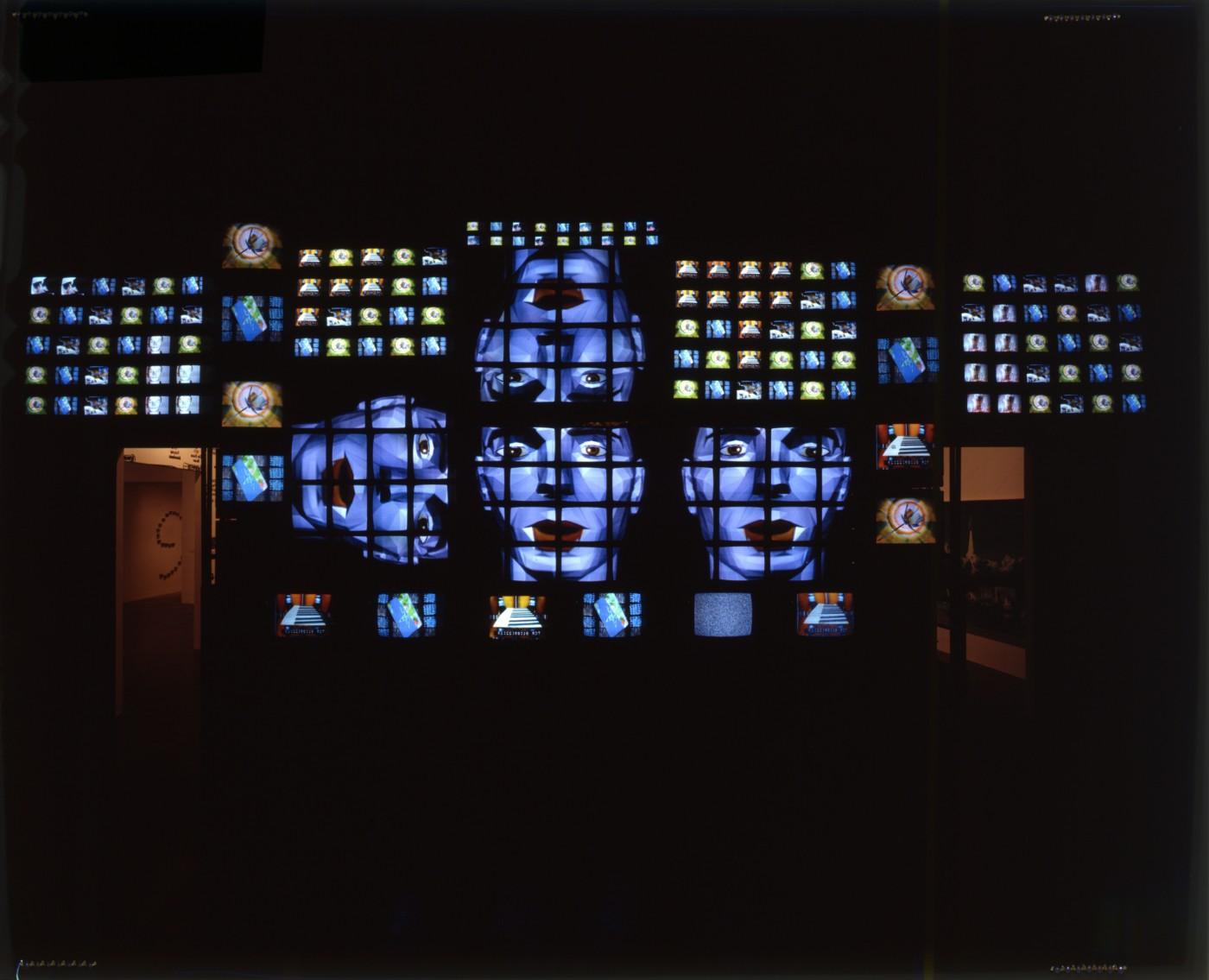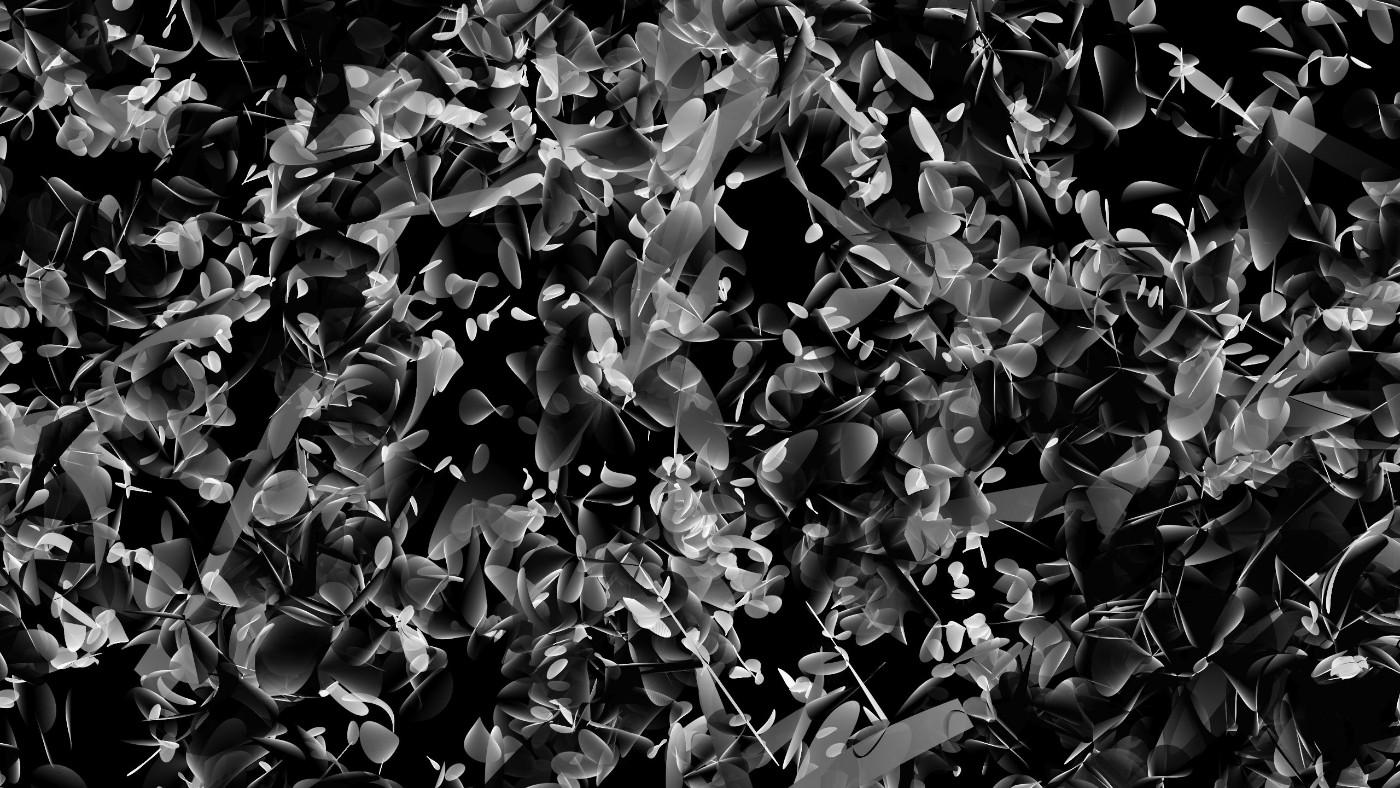From early mathematical works, to Generative art, to digital art in a variety of media, the works in Programmed take many forms. Early conceptual paintings and drawings give way to Nam June Paik’s sculptures made of televisions. Cory Arcangel’s manipulation of a Super Mario Brother’s Nintendo Game shows a new generation creating art from the digital media that is ingrained in their lives. With the invention of the internet, web-based art soon followed, allowing artists to reach new audiences with artistic manipulations that can be playful and socially critical.

Nam June Paik (1932-2006), Fin de Siecle II, 1989. Video installation, 201 television sets with four laserdiscs. Whitney Museum of American Art, New York; gift of Laila and Thurston Twigg-Smith 93.139.
Taking a contemporary perspective, the Whitney is looking back through their collection, reviewing how programming has evolved in modern and contemporary art. Programmed: Rules, Codes, and Choreographies in Art, 1965–2018 begins with early conceptual works from artists like Sol LeWitt, Josef Albers, and Donald Judd, who used rules and instructions to guide their creative practices. By creating and working within these parameters, these early conceptual artists of the 1960s insisted that the idea behind the work was just as important as the work itself.
Since the 1960s, this notion of the idea behind the work being a vital component, one that can be as crucial as the product itself, has permeated contemporary art practices. The Whitney traces this strain to its contemporary literal embodiment: works created by computer program, where the result and coding behind it are inseparable and both works of art.
The exhibition is capped with a recent commision by the Whitney from Tamiko Thiel. Unexpected Growth is an augmented reality experience, where visitors use an app and their digital device to view the museum’s 6th floor galleries with a digital overlay of images. Thiel has imagined the Whitney after years of rising sea levels due to climate change, filling the gallery with bright aqua water and vibrant coral growth. As more visitors enter the gallery, their presence eventually kills of the coral, and a new life cycle begins.

Tamiko Thiel (b. 1957), (with /p), Unexpected Growth (in progress), 2018. Augmented reality app. Commissioned by the Whitney Museum of American Art.
Programmed: Rules, Codes, and Choreographies in Art, 1965–2018 is on view at the Whitney Museum of American Art through April 14, 2019.






























